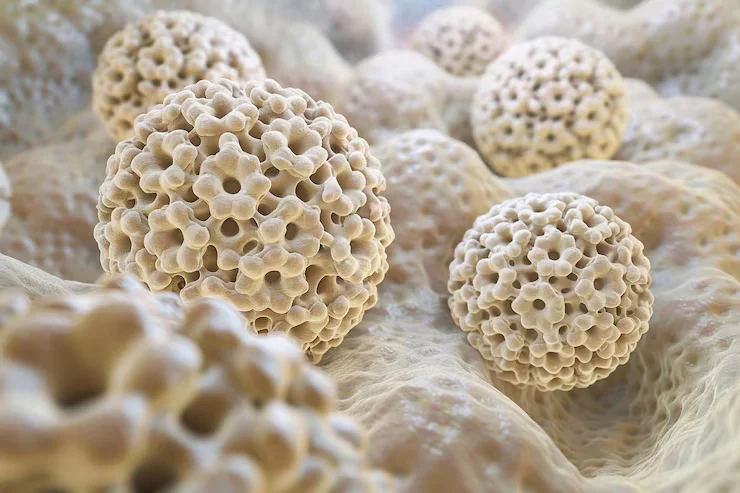-
BP Poddar Hospital
BP Poddar Hospital

Learn how parents can spot soft tissue tumors in children. Recognize the signs, symptoms, and get timely advice from one of the best surgical oncologists.

Soft tissue tumors in children are rare but serious growths that can appear in various parts of the body. While these tumors are not always cancerous, their presence requires prompt attention and appropriate care. Parents play a crucial role in identifying early signs of soft tissue tumors, ensuring that their child receives the necessary medical intervention at the earliest.
In this article, we’ll explore how parents can spot soft tissue tumors in children, understand the signs to look for, and take the right steps toward diagnosis and treatment.
Soft tissue abnormalities are abnormal growths that occur in the tissues that connect, support, or surround other structures and organs in the body. These tissues include muscles, fat, blood vessels, nerves, and tendons. While Soft tissue abnormalities are most common in adults, they can also affect children, although it’s much rarer.
In children, Soft tissue abnormalities can be benign (non-cancerous) or malignant (cancerous), with the latter being more concerning. Common types of Soft tissue abnormalities in children include rhabdomyosarcoma, liposarcoma, and fibrosarcoma. Identifying these tumors early increases the likelihood of successful treatment and recovery.
Recognizing the symptoms of Soft tissue abnormalities in children can be challenging, especially since many tumors grow slowly and may not be immediately noticeable. However, there are certain signs and symptoms that parents should watch for.
One of the most noticeable signs of a soft tissue tumor is the appearance of a lump or mass. These lumps may feel firm to the touch and may vary in size. Often, these growths are painless at first but can become tender as they grow larger or press against nearby tissues.
While many Musculoskeletal tumors are painless, some can cause discomfort or pain as they grow. Pain may be due to the tumor pressing on nearby nerves, blood vessels, or other tissues. If your child starts to complain about persistent pain or tenderness in an area, it could be an indication of a tumor.
If a soft tissue tumor develops near a joint or muscle, it may restrict your child’s movement. A child may experience difficulty moving a limb, walking, or engaging in activities they normally enjoy due to pain or stiffness caused by the tumor pressing on surrounding structures.
In some cases, a soft tissue tumor can cause swelling or redness around the affected area. This is typically a result of the tumor growing rapidly or inflaming the tissues around it. Swelling may be accompanied by warmth or redness in the skin.
If the tumor is malignant, systemic symptoms such as weight loss, fatigue, and decreased appetite may appear. These symptoms are less common in benign tumors but should not be ignored, especially if they are persistent.
For tumors located closer to the skin’s surface, there may be visible changes in the skin’s appearance, such as discoloration or unusual texture. The skin may appear pale, bruised, or even stretched over the growing tumor.

When you notice any of the above signs or symptoms, it is important to seek medical advice from a healthcare professional who specializes in diagnosing and treating soft tissue tumors. The best surgical oncologists in Kolkata are highly experienced in assessing and diagnosing various soft tissue tumors in children.
The diagnosis process typically involves the following steps:
A doctor will begin by performing a physical examination to assess the size, location, and consistency of the mass. The doctor will also inquire about the child’s medical history and any symptoms.
To determine the extent of the tumor, imaging tests such as X-rays, MRI scans, or CT scans may be conducted. These images help doctors visualize the tumor and its relationship to surrounding tissues.
A biopsy involves taking a small sample of tissue from the tumor for further analysis. This is often necessary to determine whether the tumor is benign or malignant and to assess the type of cancerous cells present. The biopsy sample is typically analyzed under a microscope in a laboratory.
Once diagnosed, treatment options depend on the type, location, and size of the tumor. Treatment plans are tailored to each child’s individual needs and are determined in consultation with a medical team. Some of the most common treatment options include:
Surgical removal is often the primary treatment for Musculoskeletal tumors in children, especially when the tumor is localized and has not spread. The surgeon will aim to remove the tumor completely while preserving as much normal tissue as possible. In the case of malignant tumors, additional surgery may be required to remove surrounding tissue or lymph nodes.
For tumors that cannot be completely removed through surgery, radiation therapy may be used to shrink the tumor or prevent it from growing further. Radiation therapy is often used in conjunction with other treatments for malignant tumors.
Chemotherapy uses drugs to kill cancer cells or prevent them from growing. It is commonly used for malignant Musculoskeletal tumors, particularly if the tumor has spread to other parts of the body.
In some cases, targeted therapies may be used to treat Musculoskeletal tumors. These therapies specifically target the molecules involved in tumor growth, aiming to stop the tumor from growing while minimizing damage to healthy tissues.

Some of the most common Soft tissue abnormalities in children include rhabdomyosarcoma, liposarcoma, and fibrosarcoma. These tumors are often found in the muscles, fat, or connective tissues.
Yes, many Soft tissue abnormalities in children are benign and do not pose a significant health risk. However, some can become malignant, which is why early detection and medical evaluation are crucial.
There is no known way to prevent Soft tissue abnormalities in children, but regular check-ups with a healthcare provider can help detect any abnormalities early on, leading to more effective treatment.
No, most Soft tissue abnormalities in children are benign. However, it is important to have them evaluated by a medical professional to rule out any risk of cancer.
Not all lumps or bumps are Soft tissue abnormalities. Many benign conditions, like cysts or lipomas, can appear as lumps. However, if the lump is growing, painful, or changes in appearance, it is essential to consult a medical professional for an accurate diagnosis.
Spotting soft tissue tumors in children can be challenging, but being vigilant and noticing any unusual growths or changes in your child’s body is key to early detection. While many Soft tissue abnormalities in children are benign, some can be malignant, requiring immediate medical attention and treatment. If you notice any unusual lumps, pain, or changes in your child’s body, seek advice from a qualified healthcare professional, such as the best surgical oncologists in Kolkata, to ensure a timely diagnosis and appropriate treatment.
Early intervention can significantly improve treatment outcomes and your child’s quality of life, so stay informed and proactive about your child’s health.

January 30, 2025

January 29, 2025

January 28, 2025